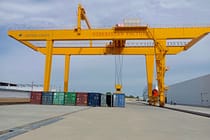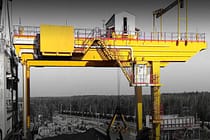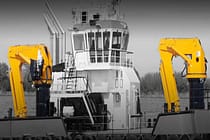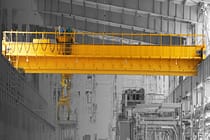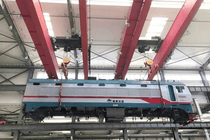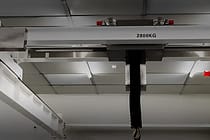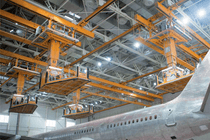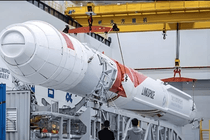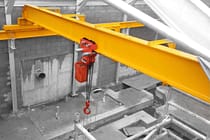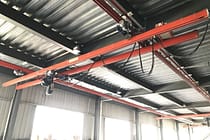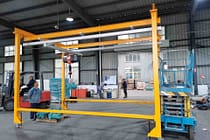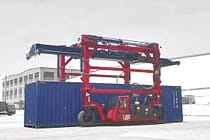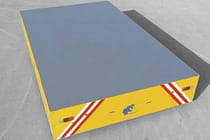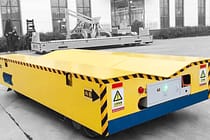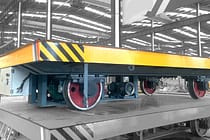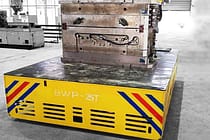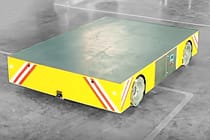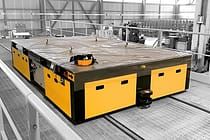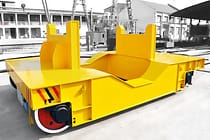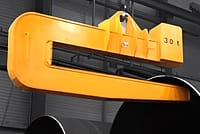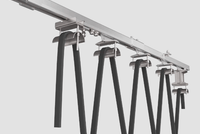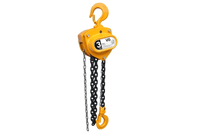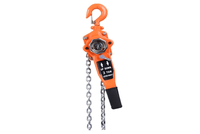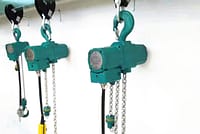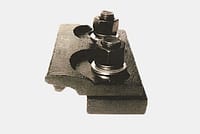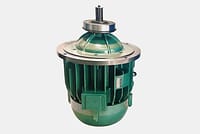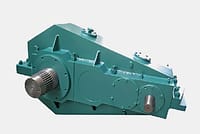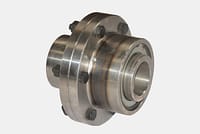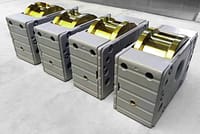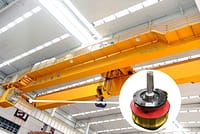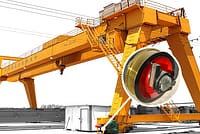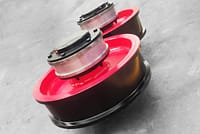Chwytaki mechaniczne czy hydrauliczne do suwnic: które lepiej odpowiadają Twoim potrzebom?
Spis treści
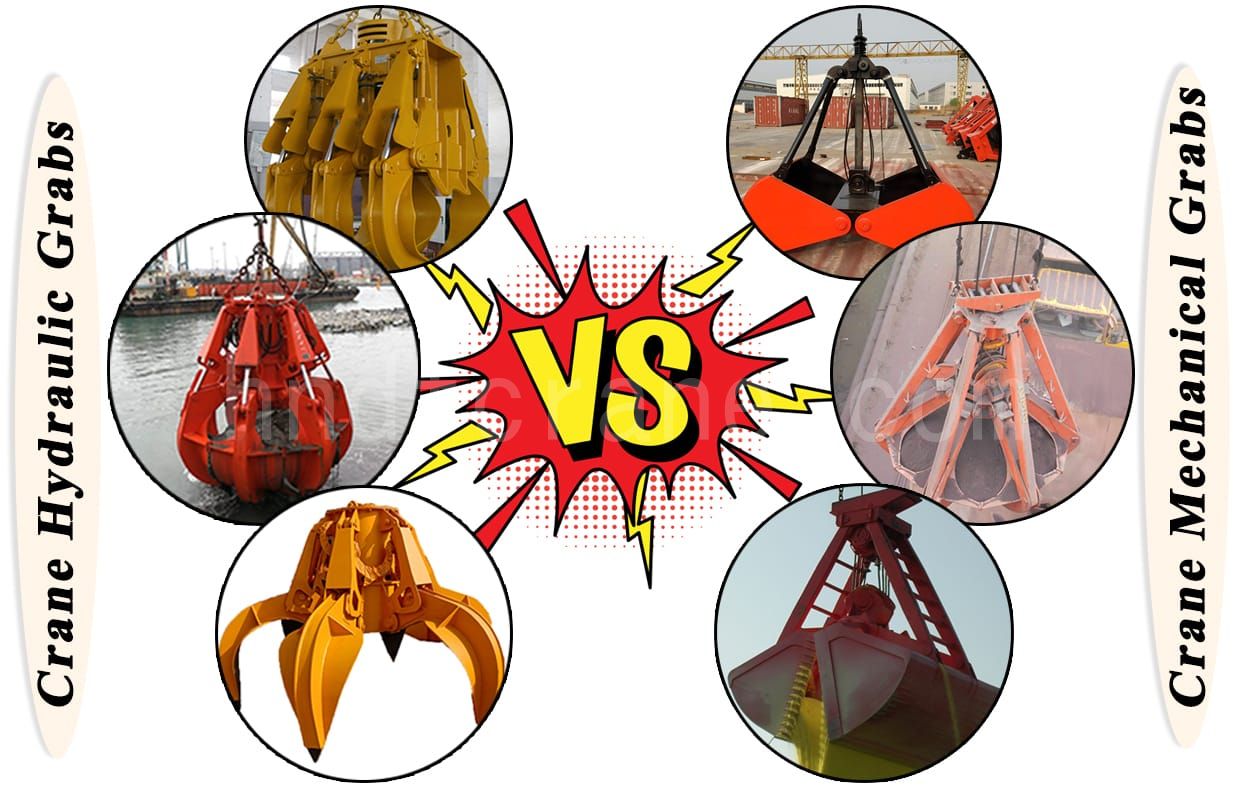
Jaka jest różnica między chwytakami mechanicznymi i hydraulicznymi?Jeśli chodzi o przenoszenie materiałów, wybór właściwego chwytaka może znacząco wpłynąć na wydajność i produktywność.Dwa najpopularniejsze typy chwytaków stosowane w dźwigach to chwytak mechaniczny i chwytak hydrauliczny.Przyjrzyjmy się różnicom między nimi i dowiedzmy się, kiedy wybrać którykolwiek typ.
Przede wszystkim przyjrzyjmy się, czym jest chwytak hydrauliczny i chwytak mechaniczny:
Klasyfikacja
Chwytaki hydrauliczne do suwnic
Chwytaki do skórek pomarańczowych elektrohydrauliczne
Chwytaki muszlowe elektrohydrauliczne
Chwytaki prostokątne elektrohydrauliczne
Łyżka hydrauliczna z okrągłym nosem
Zasada działania
Chwytaki hydrauliczne do suwnic
Zestaw mechanizmów podnoszących, chwytak hydrauliczny montowany jest pod hakiem za pomocą łatwego w demontażu haka, a teleskopowe działanie siłownika hydraulicznego dopełnia otwieranie i zamykanie łyżki.
Posiada silnik, hydrauliczną stację pompującą i zawór sterujący, który otwiera się i zamyka za pomocą zewnętrznego źródła zasilania.
Chwytaki hydrauliczne podłączone są do obwodu hydraulicznego dźwigu.
Operator może sterować podnoszeniem, otwieraniem, zamykaniem, przenoszeniem i innymi czynnościami chwytaka hydraulicznego w pomieszczeniu sterowniczym.
Powi\u0119ksz obraz: 1 mechanism","alt":"1 mechanism"}" data-wp-interactive="core/image" class="wp-block-image size-full wp-lightbox-container">
Chwytaki mechaniczne suwnicowe
Musi być wyposażony w 2 zestawy mechanizmów podnoszących, aby otwierać i zamykać chwytaki mechaniczne przez szpulę.
Chwytaki mechaniczne wykorzystują korbowody mechaniczne, koła pasowe i dźwignie do chwytania
Działa przy użyciu bezpośredniej siły fizycznej i składa się z dwóch lub więcej ramion połączonych przegubowo, o ostrych lub ząbkowanych krawędziach, podobnych do szczęk zwierzęcia, które umożliwiają mocne zaciśnięcie materiału.
Nie jest wymagane zasilanie hydrauliczne ani połączenie elektryczne. Operator ręcznie steruje ruchem chwytaka mechanicznego.
Powi\u0119ksz obraz","alt":""}" data-wp-interactive="core/image" class="wp-block-image size-full wp-lightbox-container">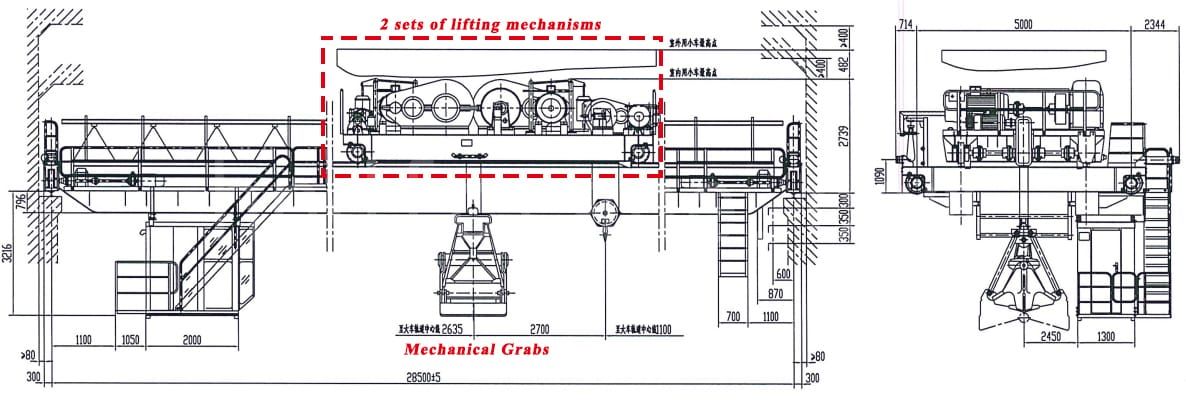
Aplikacja
Chwytaki hydrauliczne do suwnic
Gospodarka odpadami domowymi:
Żurawie chwytakowe używane w projektach utylizacji odpadów w spalarniach odpadów komunalnych i elektrowniach służą głównie do chwytania odpadów komunalnych.
Jest to inteligentny produkt, który może wykonywać operacje bez nadzoru.
Złom stalowy i duże kamienie:
Na złomowiskach i w zakładach przetwórstwa kamienia materiały o różnych kształtach i rozmiarach mogą być precyzyjnie kontrolowane i efektywnie przetwarzane.
Stara bateria:
Jest to rozwiązanie bardziej odpowiednie do precyzyjnej pracy i zmniejsza ryzyko uszkodzenia akumulatora.
Przemysł przetwórstwa spożywczego:
Złap ogórki kiszone, pikle i winiarnie do warzenia.
Stal nierdzewna jest zazwyczaj stosowana w celu zmniejszenia zanieczyszczenia.
Oczyszczanie rzeki:
Urządzenie to doskonale nadaje się do precyzyjnych prac czyszczących, umożliwiając precyzyjną kontrolę usuwania zanieczyszczeń bez nadmiernego naruszania koryta rzeki.
Przemysł lekki:
Chwytanie tworzyw sztucznych jest bardzo przydatne w precyzyjnej obróbce tworzyw sztucznych, nadaje się do klasyfikacji i precyzyjnej obróbki.
Powi\u0119ksz obraz","alt":""}" data-wp-interactive="core/image" class="wp-block-image size-full wp-lightbox-container">
Chwytaki mechaniczne suwnicowe
Przetwarzanie i klasyfikacja odpadów:
Mechaniczne haki chwytakowe sprawdzają się przy podnoszeniu materiałów masowych, takich jak kłody, złom, skały i gruz.
Zakłady gospodarki odpadami używają chwytaków do sortowania i przenoszenia materiałów nadających się do recyklingu, odpadów zielonych i odpadów budowlanych.
Zdemontować i zdekonstruować:
Podczas prac rozbiórkowych chwytak mechaniczny usuwa konstrukcję budynku, chwytając i ciągnąc materiał.
Usunięcie betonu, stalowych belek i innych elementów minimalizuje zapotrzebowanie na siłę roboczą i skraca harmonogram projektu.
Załadunek i rozładunek:
Chwytak może efektywnie przenosić ładunki masowe, takie jak węgiel, zboże i kruszywa.
Operacje leśne:
Sprawne ładowanie i rozładowywanie kłód, wspomagające wycinkę i transport drewna.
Utrzymują operatorów z dala od powalonych drzew i ciężkich kłód, zwiększając tym samym bezpieczeństwo.
Powi\u0119ksz obraz","alt":""}" data-wp-interactive="core/image" class="wp-block-image size-full wp-lightbox-container">
Konserwacja
Chwytaki hydrauliczne do suwnic
Układ hydrauliczny ma wiele mechanizmów, a jego konserwacja jest bardziej uciążliwa niż w przypadku chwytaków mechanicznych.
Układ hydrauliczny jest bardziej skomplikowany, a koszty jego konserwacji wyższe. Ponadto jest on podatny na zapowietrzenie i inne awarie występujące podczas użytkowania.
Chwytaki mechaniczne suwnicowe
W porównaniu z chwytakami hydraulicznymi chwytaki mechaniczne są proste w utrzymaniu i trwałe. Chwytaki mechaniczne są zazwyczaj kwestią zużycia liny stalowej. W tym momencie należy wymienić tylko linę stalową.
Chwytaki hydrauliczne dźwigu są sterowane przez układ hydrauliczny, który ma zalety wysokiej precyzji i elastycznej pracy. Nadaje się do załadunku i rozładunku ładunków masowych i sytuacji wymagających precyzyjnej obsługi, ale jego konstrukcja jest skomplikowana, a koszty konserwacji wysokie. Chwytaki mechaniczne opierają się na sterowaniu liną stalową, co nadaje się do przenoszenia dużych kawałków materiałów i ciężkich operacji w trudnych warunkach. Konstrukcja jest stosunkowo prosta, a koszty konserwacji niskie. Przy wyborze należy określić rodzaj chwytaka zgodnie z wymaganiami operacyjnymi, wymaganiami dotyczącymi dokładności i środowiskiem pracy.
Jak wybrać odpowiedni chwyt
Wyjaśnij swój cel:zanim zagłębisz się w opcje, wyjaśnij swoje szczegółowe wymagania.Zadaj sobie pytanie:
- Z jakimi materiałami chcesz mieć do czynienia? (Kłody, złom, kamień, itp.)
- Jakie zadania będzie wykonywał chwytak? (Załadunek, sortowanie, demontaż itp.)
- Do jakiego typu urządzenia będzie podłączony? (Suwnica bramowa, suwnica)
- Jaki jest ciężar właściwy chwytanego materiału? Jaka jest liczba kostek chwytaka?
- Ze względu na właściwości chwytanego materiału chwytaki dzieli się zazwyczaj na cztery podstawowe typy: lekkie, średnie, ciężkie i superciężkie.
| Rodzaj materiału do uchwycenia | Chwyć materiał | Waga nośna (t/m³) |
| Światło | Koks, żużel, zboża, ziemniaki, średniej jakości wapno antracytowe, cement, gleba, żwir, glina, pokruszone cegły itp. | 0.5~1.2 |
| Średni | Torf, duże bryły węgla antracytowego, ubity węgiel, glina, wapień, żwir, sól, żwir, cegły, boksyt, płatki tlenku żelaza, cement, piasek i cegły w wodzie itp. | 1.2~2.0 |
| Ciężki | Wapień, ciężka glina, rudy drobne i średnie, twarda skała, prętowy tlenek żelaza, ruda żelaza, proszek koncentratu ołowiu itp. | 2.0~2.6 |
| Nadwaga | Duże rudy, duża ruda manganu, osadowy aglomerowany proszek rudy ołowiu itp. | 2.6~3.3 |
- Jaki jest tonaż Państwa dźwigu wyposażonego w chwytak?
Zgodność akcesoriów: Upewnij się, że chwytak jest kompatybilny z istniejącym sprzętem.
Rozważania budżetowe: Zakres cen chwytaków jest różny. Przy ustalaniu budżetu należy wziąć pod uwagę funkcjonalność i trwałość chwytaka.
Komentarze i sugestie: Przeprowadź badania online, przeczytaj opinie użytkowników i poproś o sugestie kolegów z branży.
Przed zakupem należy udać się do producenta dźwigu w celu przeprowadzenia inspekcji i testów na miejscu: Przetestuj chwytak w warunkach rzeczywistych tak często, jak to możliwe. Oceń jego wydajność, łatwość użytkowania i ogólną funkcjonalność.
Należy pamiętać, że wybór odpowiedniego chwytaka wymaga zachowania równowagi pomiędzy funkcjonalnością, bezpieczeństwem i kosztami. Biorąc pod uwagę te czynniki, znajdziesz idealny chwytak, który zwiększy wydajność i zagwarantuje płynną pracę.
Wybierz odpowiednie chwytaki hydrauliczne i mechaniczne w zależności od potrzeb różnych projektów
Aby pomóc Ci dokonać właściwego wyboru, skorzystaliśmy z danych z 2 poprzednich projektów Dafangcrane.
Przypadek 1 - Chwytaki hydrauliczne są stosowane na suwnicach
Powi\u0119ksz obraz","alt":""}" data-wp-interactive="core/image" class="wp-block-image size-full wp-lightbox-container">
- Typ chwytu: Chwytaki do skórek pomarańczowych elektrohydrauliczne , objętość chwytu 4m3*A6
- Typ projektu: Stosowany w projektach wytwarzania energii z odpadów, głównie do mieszania, składowania, obsługi, miksowania itp. odpadów komunalnych w celu zapewnienia jednolitego składu odpadów. Dziennie przetwarzane jest 600 ton śmieci; czas pracy sprzętu wynosi ponad 8000 godzin.
- Charakterystyka materiału:
- Zawartość wilgoci w odpadach domowych wynosi 45%~65%
- Gęstość śmieci w chwytaku wynosi 0,6~0,9t/m3
- Pojemność pojemnika na śmieci (w komorze na śmieci) 0,3~0,6t/m3
- Kąt akumulacji statycznej 65 stopni
- Informacje dotyczące cen: Chwytaki hydrauliczne są inteligentniejsze i bardziej skomplikowane niż chwytaki mechaniczne, dlatego ich cena jest 4,1 razy wyższa od ceny chwytaka mechanicznego.
- Dlaczego warto wybrać chwytaki hydrauliczne:
Różnorodność materiałów: Skład odpadów komunalnych jest złożony, zawartość wilgoci jest wysoka, a różnorodność materiałów duża, co wymaga stosowania elastycznych chwytaków do ich przetwarzania. Chwytaki hydrauliczne są wielofunkcyjne i mogą skutecznie przetwarzać materiały różnych typów i stanów skupienia.
Zrozumienie dokładności i wydajności: Chwytaki hydrauliczne umożliwiają precyzyjną kontrolę siły i kąta chwytania oraz przystosowują się do precyzyjnych operacji wymaganych w procesie utylizacji odpadów, takich jak mieszanie, wysypywanie, przenoszenie i mieszanie, w celu zapewnienia jednolitego składu odpadów.
Duża zdolność przetwarzania: 600 ton śmieci jest przetwarzanych dziennie, a sprzęt działa do 8000 godzin. Trwałość i wydajność chwytaka hydraulicznego spełniają potrzeby operacji o wysokiej intensywności.
Bezpieczeństwo i stabilność: Chwytaki hydrauliczne działają płynnie, co pozwala ograniczyć ryzyko rozsypania materiału i uszkodzenia sprzętu, poprawia bezpieczeństwo pracy i nadają się do przenoszenia odpadów komunalnych o dużej zawartości wilgoci i dużych zmianach gęstości.
Dostosuj się do złożonych środowisk operacyjnych: Chwytaki hydrauliczne mogą pracować wydajnie w zmiennych warunkach roboczych, co jest szczególnie przydatne w przypadku utylizacji odpadów, gdzie wymagana jest częsta obsługa i elastyczna reakcja na różne materiały.
Operacje długoterminowe i o wysokiej częstotliwości: Trwałość i stabilność chwytaka hydraulicznego pozwala mu sprostać długotrwałym i częstym operacjom, skraca przestoje i poprawia ogólną wydajność pracy.
Podsumowując, wybór chwytaka hydraulicznego opiera się na kompleksowych rozważaniach dotyczących elastyczności, wysokiej wydajności, trwałości i bezpieczeństwa, dzięki czemu może on skutecznie sprostać złożonym i intensywnym potrzebom operacyjnym projektów związanych z wytwarzaniem energii z odpadów.
Przypadek 2 - Chwytaki mechaniczne są stosowane na suwnicach
Powi\u0119ksz obraz","alt":""}" data-wp-interactive="core/image" class="wp-block-image size-full wp-lightbox-container">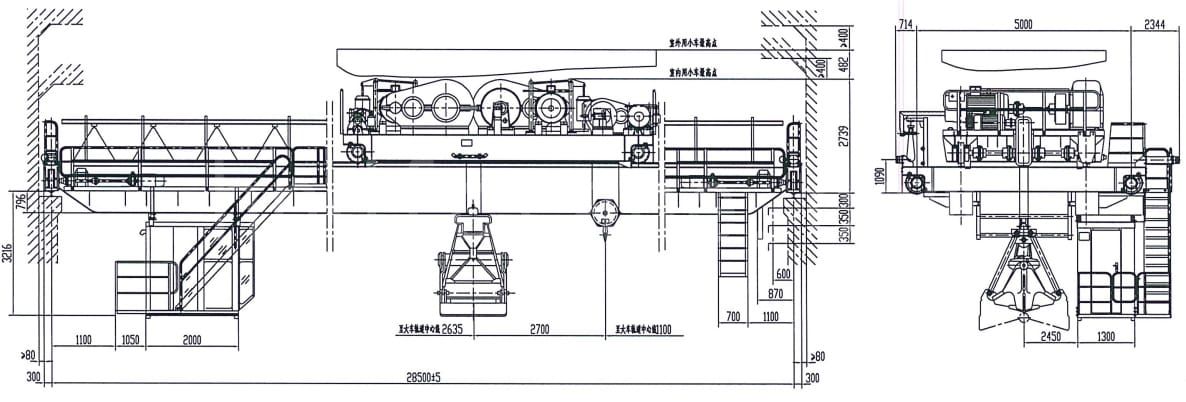
- Typ chwytu: Mechaniczny chwytak czterolinowy typu clamshell ,objętość chwytania 4m3
- Gęstość właściwa materiału: 2t/m3
- Typ projektu: stosowana w firmach zajmujących się materiałami magnetycznymi z proszków metalowych, lina chwytna wykonana jest ze stali nierdzewnej odpornej na temperaturę.
- Cena referencyjna: chwytak mechaniczny ma prostą konstrukcję i kosztuje około 24,39% chwytaka hydraulicznego, co czyni go najlepszym wyborem, jeśli dysponujesz ograniczonym budżetem
- Dlaczego warto wybrać chwytak mechaniczny:
Dobre uszczelnienie: Materiały takie jak proszek metalowy łatwo rozsypują się podczas przenoszenia, a chwytaki mechaniczne mają prostą konstrukcję i dobre uszczelnienie, co może skutecznie zapobiegać wysypywaniu się materiałów i poprawiać czystość oraz bezpieczeństwo operacji.
Opłacalność: Koszty zakupu i konserwacji chwytaków mechanicznych są niskie, a same chwytaki nadają się do operacji o ograniczonym budżecie oraz do długotrwałego i częstego użytkowania.
Trwałość: Lina chwytna wykonana jest ze stali nierdzewnej odpornej na temperaturę, co sprawia, że nadaje się do transportu materiałów, takich jak proszki metali, które mają wysokie wymagania dotyczące odporności na temperaturę i korozję.
Zastosowane środowisko: W przypadku suchych proszków metali siła chwytu i stabilność chwytaków mechanicznych są wystarczające, aby sprostać potrzebom, a obsługa jest prosta i łatwa w utrzymaniu.
Wydajność pracy: Chwytak mechaniczny umożliwia szybkie i wydajne chwytanie i przenoszenie materiałów, zwiększa ogólną wydajność pracy i jest odpowiedni do szybkich potrzeb operacyjnych przemysłowych linii produkcyjnych.
Podsumowując, wybór chwytaka mechanicznego opiera się na kompleksowych rozważaniach dotyczących zamknięcia, opłacalności, trwałości, zastosowania w środowisku i wydajności operacyjnej, co może skutecznie zaspokoić rzeczywiste potrzeby firm zajmujących się materiałami magnetycznymi w postaci proszków metalowych.
Porównanie kompleksowe
Zaleca się wybór chwytaków mechanicznych w następujących przypadkach:
- Trudne warunki pracy: W trudnych warunkach, przy dużym zapyleniu i wilgotności, chwytaki mechaniczne są bardziej niezawodne niż chwytaki hydrauliczne i mniej podatne na wpływy środowiska.
- Priorytetem jest prostota i opłacalność: chwytaki mechaniczne charakteryzują się prostą konstrukcją i niskimi kosztami konserwacji, co czyni je idealnymi do projektów o ograniczonym budżecie.
- Łatwa konserwacja: chwytaki mechaniczne mają prostą konstrukcję i wymagają niewielkiej konserwacji, co pozwala ograniczyć przestoje i poprawić ciągłość działania.
- Dostępny sprzęt: Jeżeli istniejący sprzęt podnoszący nie posiada układu hydraulicznego, można bezpośrednio użyć chwytaka mechanicznego bez dodatkowych przeróbek lub inwestycji.
- Szkolenie w zakresie obsługi: obsługa chwytaka mechanicznego jest stosunkowo prosta, koszt szkolenia jest niski, a urządzenie nadaje się do szybkiego rozmieszczenia i użytkowania.
Zaleca się wybór chwytaków hydraulicznych w następujących przypadkach:
- Gdy wymagana jest większa siła chwytu: chwytaki hydrauliczne są elastyczne w działaniu, siłę i kąt chwytu można dokładnie kontrolować, a siła chwytu jest większa niż w przypadku chwytaków mechanicznych.
- Obsługujesz maszyny hydrauliczne: jeśli posiadasz już sprzęt hydrauliczny, możesz bezpośrednio zintegrować chwytaki hydrauliczne, aby zwiększyć wydajność pracy.
- Bezpieczne i wydajne przenoszenie materiałów jest niezwykle istotne: chwytaki hydrauliczne działają płynnie, redukują uszkodzenia materiałów i ryzyko operacyjne oraz zwiększają bezpieczeństwo i wydajność pracy.
- Istnieją wymagania dotyczące automatyzacji: chwytak hydrauliczny można zintegrować z systemem sterowania automatycznego w celu uzyskania bardziej inteligentnych operacji i zwiększenia ogólnej wydajności produkcji.
Krótko mówiąc, chwytaki mechaniczne i hydrauliczne mają swoje zalety w transporcie materiałów. Oceń swoje konkretne wymagania, rozważ dostępny sprzęt i podejmij świadomy wybór. Niezależnie od tego, czy wybierzesz solidność i prostotę chwytaków mechanicznych, czy dokładność chwytaków hydraulicznych, pamiętaj, że właściwy chwytak może zwiększyć wydajność i zapewnić płynną pracę.
Dafang Crane oferuje szeroką gamę chwytaków hydraulicznych i mechanicznych, w tym różne typy chwytaków automatycznych zaprojektowanych tak, aby sprostać zróżnicowanym potrzebom. Niezależnie od tego, czy szukasz wydajnych rozwiązań do podnoszenia ciężkich ładunków, czy specjalistycznych zastosowań, mamy odpowiedni sprzęt dla Ciebie. Kliknij poniższy link do obrazu, aby zapoznać się z naszą pełną ofertą i znaleźć idealny chwytak dla potrzeb Twojej firmy.
15 różnych chwytaków do zastosowań dźwigowych.

Wyślij zapytanie
- E-mail: sprzedaż@hndfcrane.com
- WhatsApp: +86 191 3738 6654
- Telegram: +86 191 3738 6654
- Tel: +86-373-581 8299
- Faks: +86-373-215 7000
- Dodaj: dzielnica przemysłowa Changnao, miasto Xinxiang, prowincja Henan, Chiny
 WeChat
WeChat








